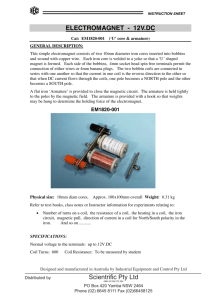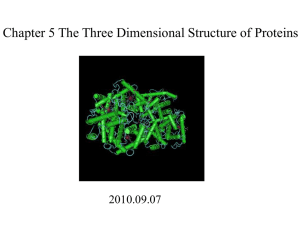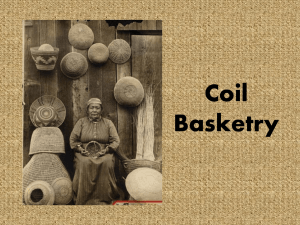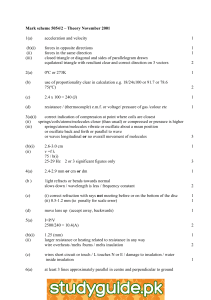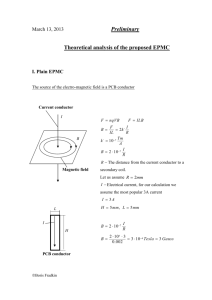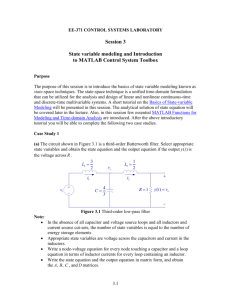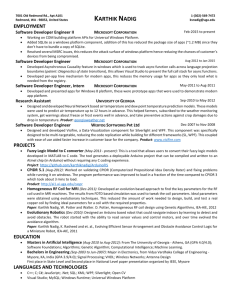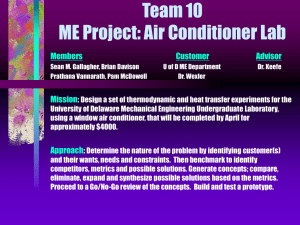SUNY-O Tech Talk: COIL 8 October 2015 COIL = Collaborative
advertisement
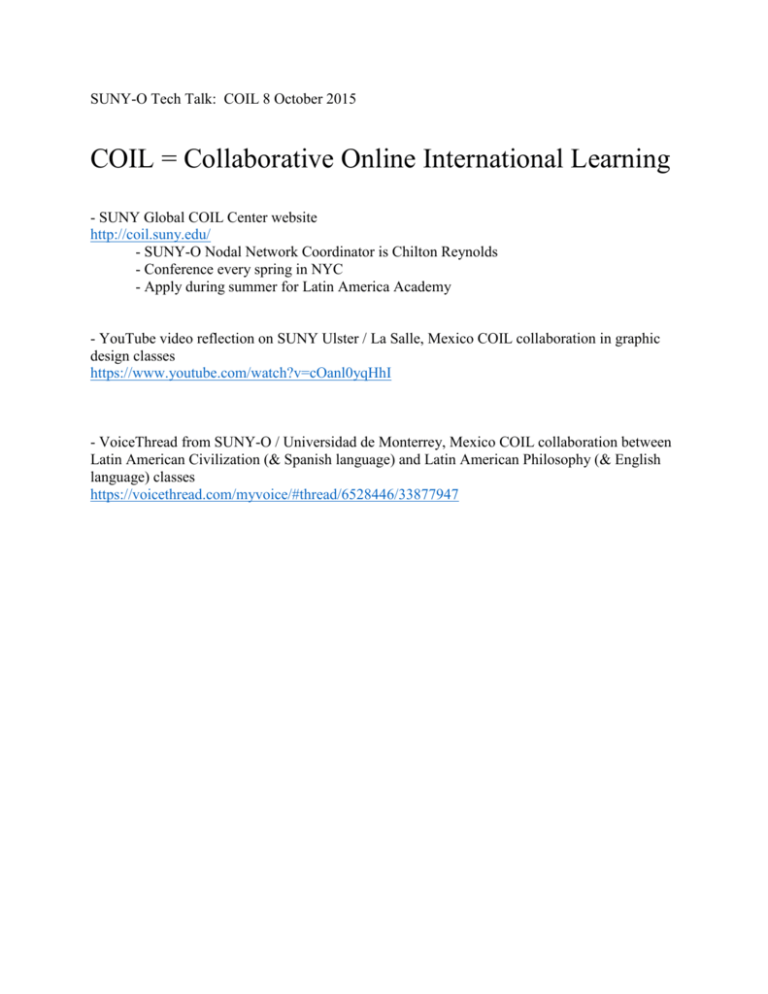
SUNY-O Tech Talk: COIL 8 October 2015 COIL = Collaborative Online International Learning - SUNY Global COIL Center website http://coil.suny.edu/ - SUNY-O Nodal Network Coordinator is Chilton Reynolds - Conference every spring in NYC - Apply during summer for Latin America Academy - YouTube video reflection on SUNY Ulster / La Salle, Mexico COIL collaboration in graphic design classes https://www.youtube.com/watch?v=cOanl0yqHhI - VoiceThread from SUNY-O / Universidad de Monterrey, Mexico COIL collaboration between Latin American Civilization (& Spanish language) and Latin American Philosophy (& English language) classes https://voicethread.com/myvoice/#thread/6528446/33877947 Lessons Learned From Spring 2015 SPAN 205 LatAm Civ + UDEM Filosofía Latinoamericana • Students tended to just do their part of the graded work and no more, and did not develop the real intercultural relationships we hoped for. + We may need to assign different kinds of projects, so instead of teams to create a presentation, they might interview their partner weekly. This would mean changing the COIL module priorities, to emphasize the development of intercultural connections more than the course content. + We may have students in partnerships and teams from the beginning, maybe changing them at the halfway point, to allow for deeper interactions to develop. • The students were able to submit their presentations to the professors, but could not share them with each other for the whole-class commentary and discussion we had hoped for. + We will need one consistent platform for students to submit and share their graded work: Google Docs was inconsistent in sharing documents as they were being revised and commented on. + We'll need to decide where our pedagogical priorities lie and let that drive our choice of platform (rather than letting Google Docs lead us to decide that commentary and discussion was something we would eliminate). • The whole-class Skype sessions that we had were great for giving the COIL modules a sense of human connection, but could have been more focused and effective. + Group sessions need to have a clear agenda and adequate microphones. • It seems that the COIL partnerships that had the most success were either classes that were very close in content, or very well-defined project-based learning. Ours was less focused in that respect. + If we prioritize the human interaction of our students, they will find the common ground. . Big Questions • Why do COIL? And how do you express those aspirations in pedagogical practice? • Where does COIL fit in the larger picture of student engagement and global connectedness? • How to harness social technology (which typically has a more superficial, short-term culture) in the context of academic interactions (which aspire to something rather deeper)? • How to find (and implement) the perfect technology platform for one's particular project? •

